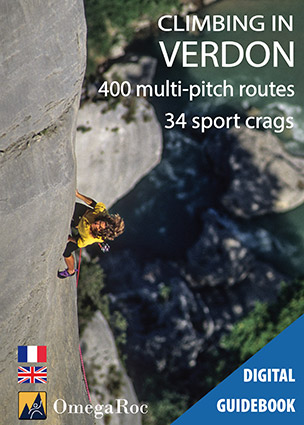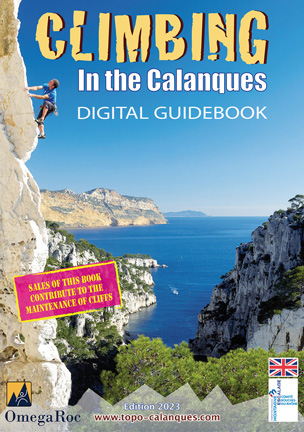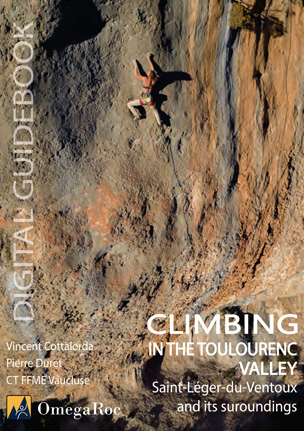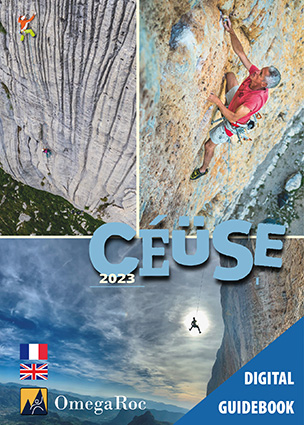
The digital guidebook CLIMBING IN VERDON 2024
See the content in the OmegaRoc app
This guidebook is the digital, updated, and expanded version of the reference guide ‘Climbing in Verdon – 52 Years and 520 Routes ‘ from 2017.
It presents a large selection of routes in the Gorges du Verdon and surrounding cliffs, as well as several nearby sport climbing areas.
You will also find numerous recently developed, well-equipped multi-pitch routes at very accessible grades (<6a). Some of them have already become classics.
In total, the guidebook presents over 400 multi-pitch routes and 34 single-pitch sectors*.
Each route is accurately presented on photos, and details are provided regarding the climbing style, required climbing level, necessary gear, etc. The approaches are well described and supported by panoramic photos and/or maps.
In short, Climbing in Verdon is a comprehensive and reliable tool for climbing in the Gorges!
*In the single-pitch sectors, we have included the upper sectors of the Escalès wall, which mostly consist of single-pitch routes accessible from the top, such as ‘Frime et Chatiments‘ and ‘La Carelle.’
This guidebook is created voluntarily by Simon Adlinger, Olivier Dobel-Ober, and Pascal Faudou. It is published by the local climbing federation (FFME Alpes de Hautes Provence).
To learn more about this guidebook, please visit the INFO PAGES.
The authors
Simon Adlinger : Arriving late to the Verdon after completing his engineering studies, Simon quickly made up for lost time by climbing most of the iconic multi-pitch and single-pitch routes in the Gorges over the course of a decade. As the craftsman behind the first guidebook ’50 Years and 500 Routes,’ Simon has left his mark by establishing one of the longest and most challenging routes in the Verdon: ‘Le Pornographe du Topographe,’ before heading off to explore new horizons…
Olivier Dobel Ober : After giving up a teaching career, Olivier settled in La Palud sur Verdon in the late ’80s as a climbing and canyoning instructor. His knowledge of the Gorges and his skill with the pen (and keyboard!) helped enhancing the guidebook ’50 Years and 500 Climbing Routes in the Verdon.’ Even at over 56 years old, he doesn’t let up and continues to regularly add to his tick list… in the 8th grade !
Pascal Faudou : Originally from Grenoble, Pascal cut his teeth on the classic routes in the Chartreuse and Vercors massifs and placed his first bolts (with a hand drill!) at the age of 14 on the Saint-Pancrasse cliff. After his first visit to the Gorges in 1981, he immediately fell in love. Pascal moved to La Palud sur Verdon in 1988 to make a living as a climbing and canyoning instructor and, of course, to indulge in his passion for route setting in the climbing paradise.
A bit of history…
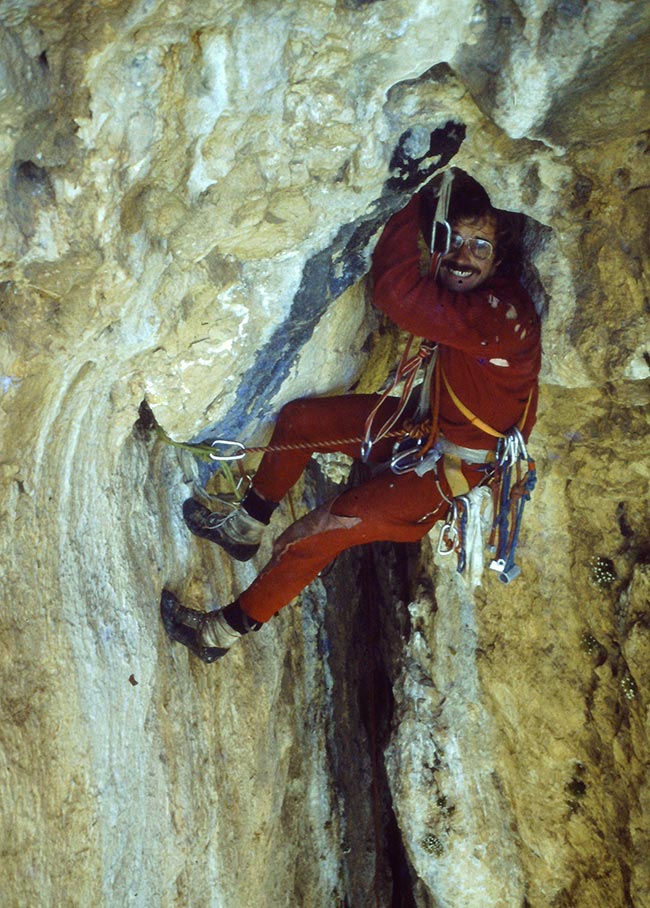
Over the last 60 years, Gorges du Verdon has witnessed the evolution of rock climbing through various eras. The story naturally begins in the obvious cracks of the large faces (the walls of Duc and Escalès). Free climbing was not the primary focus at that time. With the help of increasingly advanced protective gear, climbers become stronger, and the difficulty level rised… and vice versa.
The real revolution arrived from across the English Channel. In 1977, British climbers Peter Livsey and Ron Fawcett worked on and freed several challenging routes. Free climbing had arrived in the Gorges, changing the game, and found immediately its advocates: Patrick Cordier, Jean-Claude Droyer, among others, and also the then-young climbers Patrick Bérault and Patrick Edlinger. The main classic routes were freed, and even harder routes were established. One thing changed very little: the commitment required! It remained significant, even overwhelming for some. The Verdon, in general, and Escalès, in particular, are renowned as the most famous cliffs in the world.
Sport climbing exploded, and climbers turned to smaller cliffs, increasingly overhanging, while the Gorges no longer dominated the headlines of climbing magazines. The Verdon had reached its maturity…
New routes and safer retrobolting (some may say sanitized) opened the Gorges to a broader audience. There are fewer stars, but many more climbers come to taste the legendary exposure of the Verdon. An addictive drug.
• The spectacular Ramirole cave at the lower entrance of the Gorges is likely to attract the current big names once again. Besides a multitude of 9th-grade routes, it’s where DNA, the second 9c route announced worldwide, is located. It was sent by Seb Bouin in May 2022.
While the broad strokes of this history are similar for all major historical cliffs, the Verdon’s story is exceptionally rich in anecdotes, achievements, characters… and controversies, not always fruitless ones, by the way. It is impossible to summarize all in a few lines, or even a few pages.
To learn (a lot) more, visit the dedicated page from guidebook HERE and watch the movies to the right.
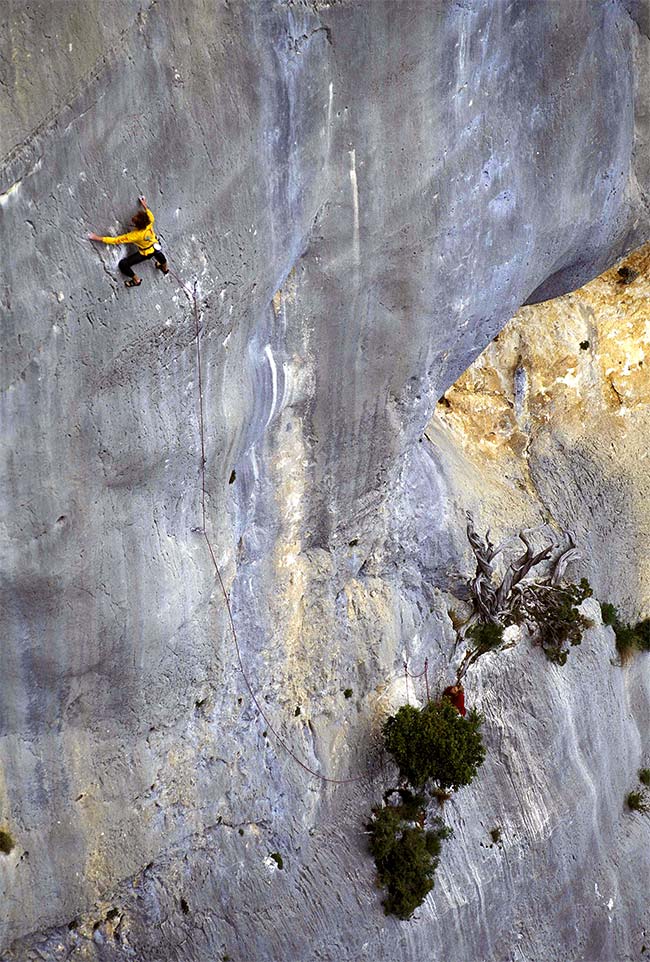
Climbing in Verdon :
The Verdon is a destination that every multi-pitch climber should have visited in their climbing-life, regardless of their level. In Verdon, there’s something for everyone in a unique setting.
The site owes its reputation to the incredible atmosphere of the towering walls of Escalès and its impeccable limestone. On these vast, steep, grey walls, nothing obstructs your view; exposure is everywhere. Climbing here is highly technical and demanding, often consistently difficult. ‘’Gouttes d’eau’’ or more or less pronounced holes and spaced holds determine the difficulty. The commitment needed can be significant, especially in the historic routes, and is a psychological factor not to be underestimated.
Fortunately, you can also experience the thrill without the fear of serious injury in newer routes with closer equipment or even more ‘safe’ by top-roping the single-pitch routes at the top of Escalès. It may not be as glorious, but it still gets your adrenaline pumping.
This summarises the stereotypical Verdon! But the Verdon is not just that!
There are also the cracks, the pioneers’ lines. They are often legendary (La Demande, Les Barjots, Ula…) of all sizes and sparsely equipped. There are also the bulges and big overhangs in some sectors (l’Estellié, le Duc) where climbing, in addition to being as technical as ever, becomes really physical.
You can also approach the Verdon in a slightly gentler way. Many peripheral cliffs provide modern routes at all levels where the commitment and exposure are toned down without compromising the quality of climbing (Le Don de l’Aigle, Moyen Eycharme, Vernis, Bas et Haut Galetas).
The extensive National Geographic blog article written by Andrew Bisharat together with the short film produced by Keith ladzinski (included at the top of the blog page) are essential for gaining a better understanding of climbing in Verdon, its features, its history, its myths, and its heroes.
Read the article
Aid climbing
The major aid climbing routes are less frequented today but still have their fans; climbers in no hurry but with nerves of steel, the kings of DIY. If you’re interested, you can safely learn on the aid climbing crag at the base of the Paroi Rouge. This training can be useful because many ‘free’ routes require climbers to have some knowledge of aid climbing.
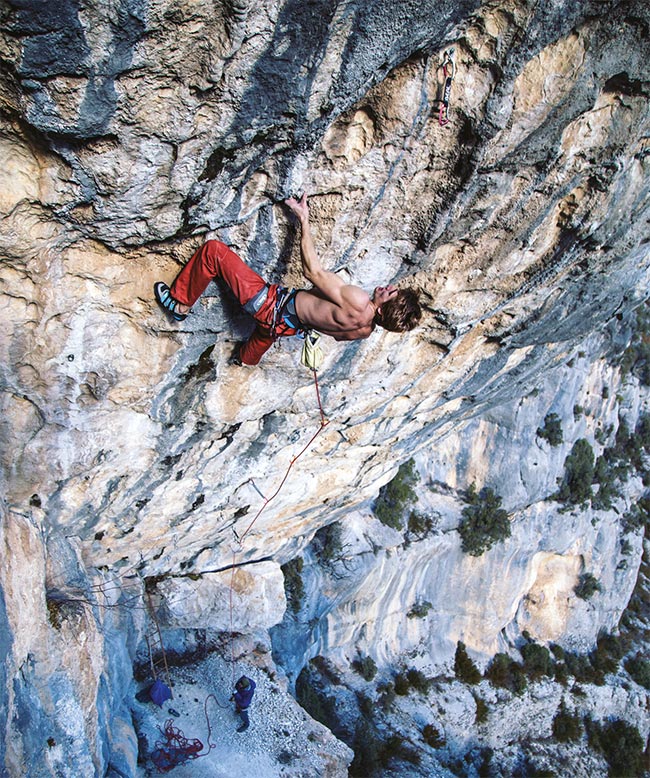
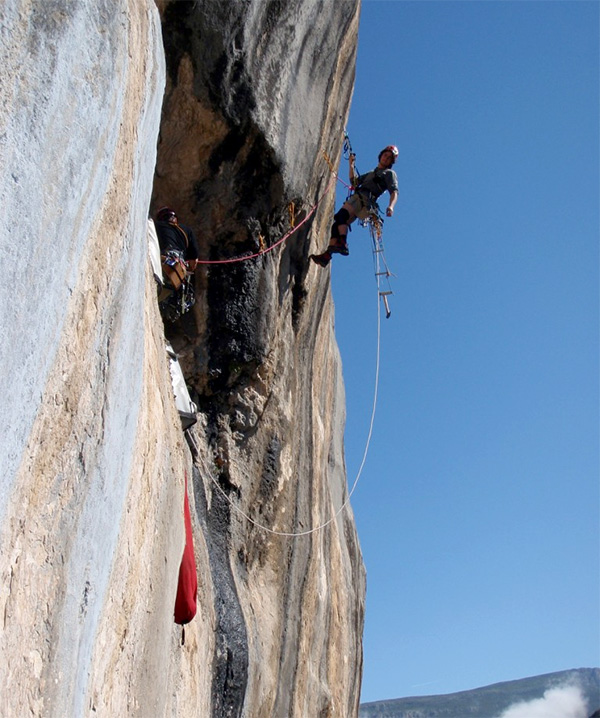
Crag climbing
Finally, for ‘rest days,’ in case of threatening weather, or if you’re simply more attracted to crag climbing than big routes, there are many sport climbing cliffs in the Gorges or nearby. Once again, there is something for everyone and in all styles, from the ultra-technical slabs of Labo, the overhanging walls with holes at Pas d’Issane, to the enormous overhangs of Hulk and La Ramirole.
Commitment / equipment :
First thing first: when faced with equipment that appears dangerous, nothing can replace caution and common sense.
In Verdon, commitment is not always present, but it is part of the game in most of the historical routes. It can be due to the spacing of bolts, determined by the route setter, or simply due to the bad condition of aging equipment. Fortunately, the enormous maintenance work undertaken in recent years has borne fruit, and most of the classic routes have been re-equipped. We’re talking about hundreds of routes that have been re-bolted!
However, in less-frequented routes, it’s a bit of a climbing museum with all kinds of bolts and pitons, homemade or not, and generally not in the best condition.
Commitment is also related to the topography of the Gorges. In many routes, retreat is difficult, if not impossible (access by abseil and starting from a remote location, traverses, etc.). If you’re not ‘’a player’’, it’s better to avoid these routes on days with uncertain weather, especially when there’s a chance of thunderstorms.
Finally, the current trend is towards closer bolt spacing and longer pitches. As a result, the number of quickdraws to carry has increased, and the norm is now around fifteen quickdraws.
For more information, read:
– Equipment, re-equipment and de-equipment…
– Safety advice.
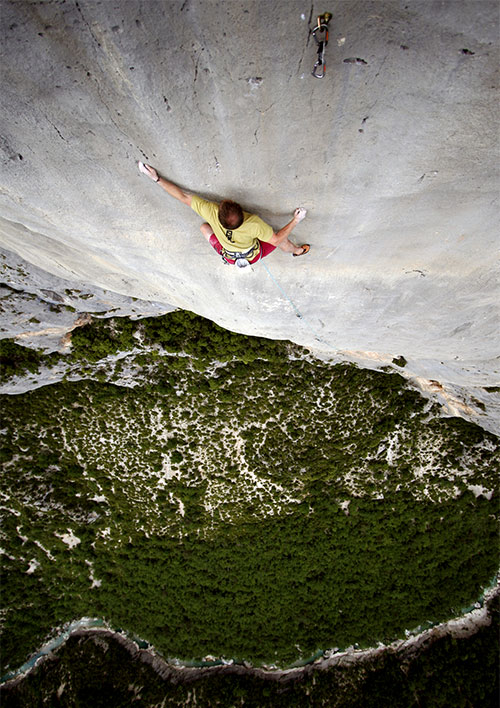
When to climb in Verdon
It’s possible to climb in Verdon throughout the year by choosing the right orientations. However, the shoulder seasons are preferred because the summer can be very hot, and only the shaded areas are pleasant. Summer is also the season of sudden and violent thunderstorms, an experience best avoided as much as possible…
In winter, when the Mistral wind blows, it’s very beautiful but very cold! The south-facing, less sheltered cliffs then become hidden gems.
For all the weather tips for climbing in the Gorges, click HERE.
It happened in Verdon…
Steve McClure and Neil Mawson climb La Fiesta de los matallos, a hard, very hard route…
Mich Kemeter freesolo climb at Escalès.
It’s impressive but not recommended!
A beautiful presentation of climbing in Verdon.
Aid climbing: Nagazaki
Pitons, wooden wedges, leadhead, nuts, a lot of time and skill!
Explore the crags in the neighborhood
Here are somme digital guidebooks for climbing in the surroundings areas.
To see all the guidebooks available on the OmegaRoc app: The OmegaRoc guidebooks

